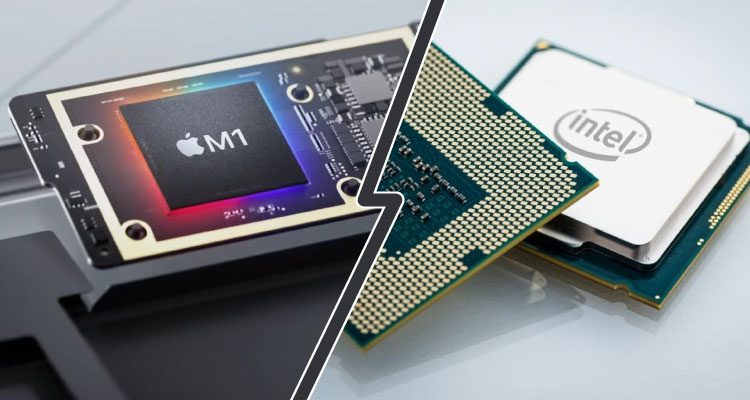Have you ever wondered what makes our mobile phones perform the way they do? Well, certainly at a point you might have. Inside our devices is embedded a high-powered electronic circuit board that runs it efficiently. For years, smartphones have been running on ARM, Intel, and MIPS, all of them being the top architectures for programming.
ARM is the latest among all processor architecture and is currently used by all modern smartphones including the Apple ecosystems. Intel’s x86 architecture is known for its excellent speed and processing power. As for the MIPS, they have not been seen for many years. ARM (Advanced RISC Machines) and Intel’s x86 processors have a long way to go, let’s explore the scope of these two processors and find out how and where they differ in functioning.
Key differences between ARM and x86 architecture based on the architecture
A RISC processor focuses on using a few instructions and rather equips more compartmentalized instruction sets. Meaning, in one clock cycle one instruction will perform a particular operation. ARM synthesizes 32-bit and 64-bit RISC multi-core processors which makes it operate at a higher speed and perform millions of instructions per second. RISC processors are meant to provide outstanding performance at a fraction of the power demand of complex instruction set computing vices.

Some of the exceptional features of ARM processors include load/store architecture, an orthogonal instruction set, mostly single-cycle execution, enhanced power-saving design, 64 and 32-bit execution states for scalable high performance and hardware virtualization support.
The history of RISC designs involved the use of 32-bit architecture but later in 2011, ARM Holdings made a change and incorporated 64-bit support in their designs. This ultimately reduced the complexity of RISC units and even lowered the cost compared to traditional processors.
ARM processors are ideal for all portable devices like smartphones, tablets, and some laptops as they are capable of combining high-performance RISC designs, lower manufacturing costs, and reduced power consumption. As for the manufacturing, ARM Holdings don’t produce processors by themselves, instead, they compose the technology, synthesize the instruction standard, and license the designs to other manufacturers.
Intel’s x86 chip uses an architecture mostly used in desktop and server CPUs. It utilizes 64-bit computing and supports mobile and desktop operating systems like Linux and Windows. Their instruction sets are designed to perform more complex tasks and due to their complexity, their consumption power is on a higher side ranging anywhere from 6 to 30W which compared to an ARM processor (>5W) is large. Classified by bit amount, the x86 architecture is classified by bit amount and executed in multiple microprocessors, including 8086, 80286, 80386, Core 2, Atom, and the Pentium series. Microprocessor manufacturers, like AMD and VIA Technologies, have also adopted the x86 architecture.
The processor requires less RAM mainly due to the complexity built into the CPU’s processor thereby depending more on the hardware than the compiler for translation. Intel’s x86 architecture requires more complex ISA, uses less RAM, the compiler has to do less to translate high-level code, uses more power, requires more from the hardware and less from the software, and requires more transistors corresponding to more hardware space.
ARM |
x86 |
| Introduced in 1985 | Introduced in 1978 |
| Uses Reduced Instruction Set Computing(RISC) | Uses Complex Instruction Set Computing(RISC) |
| Executes single instruction per cycle. | Executes complex instruction at a time and it takes more than a cycle. |
| Faster execution of instructions reduces time. | Execution time is more. |
| Available memory is used for calculations. | Needs supplement memory for calculations. |
| The ability to share workloads across high and low-performance CPU cores makes it more energy-efficient. | X86 does not have the ability to share workloads across high and low-performance CPU cores make it less energy efficient. |
| Reduced operating temperature. | The operating temperature is generally high. |
FAQs
Is X64 better than x86?
The x86 (32-bit processors) has a maximum physical memory at 4 GB, while x64 (64-bit processors) is capable of handling 8, 16, and 32GB of physical memory.
Does Apple use ARM?
Apple’s custom chips are Arm-based and are used in the latest iPhones and iPads.
Can Windows 10 run on ARM?
PCs running on Windows 10 are powered by ARM processors.
Why is arm so popular?
ARM is considered to be the most popular processor as it is used in portable devices. They require low power consumption and provide reasonable performance. Many research has concluded that ARM has got better performance as compared to other processors.
Conclusion
To conclude, I would say that ARM is a bit more efficient and focuses majorly on simple instruction sets, efficiency, and low power usage. Equipping fewer transistors excludes the hardware space and that makes it highly portable. ARM is also all set to venture into the server market by marking a change in direction by betting on performance-per-watt over raw compute power. So anyone whose work does not require complex displays should undoubtedly go for ARM.





